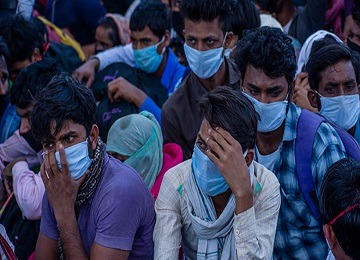Recovering from an unprecedented pandemic induced lockdown, the Indian real estate sector is slowly getting back on track, starting with credible developers with a proven track record, but that is hardly enough fuel to sustain one of India’s largest growth engines.
Prior to the COVID era, increasing urbanisation, rising disposable income, a renewed focus on the sector by the government and budding aspirations of the urban, middle-class salaried folks were the key demand drivers in the housing story. With the current global shock wiping out a lot of the ‘old’, new factors must now be considered, one of which – reverse migration, could be the harbinger of revival for the sector.
Reverse Migration
The mass exodus of the migrant working population, across income levels, has set off a new wave of “reverse migration” in India; as labourers (both skilled and unskilled), management executives and entrepreneurs are moving from bigger cities to smaller home towns and suburban areas. While this has always been happening in miniscule numbers, the pandemic has changed things in a way that reverse migration cannot be overlooked anymore. It is a thing.
For instance, it is seen that currently, thousands of workers from bigger cities are shifting to smaller towns (Lucknow, Indore, Chandigarh, Kochi, Coimbatore, Jaipur, and Ahmedabad look like the major reverse migration destinations among many more today), from where they migrated to the urban centres originally. A forced stay in the hinterland, forced by a lockdown has spiralled into a permanent change of mind for many.
These urban-rural migrants, comprising professionals who have lost employment in the metros or are likely to in the near future, want to reap the benefits of a lower cost of living and a healthier lifestyle that many Indian Tier 2 and Tier 3 cities provide.
Job losses are not merely a countrywide phenomenon anymore. Numerous NRIs are also returning to India as job prospects thin out considerably in employment hotspots abroad, like the US and European nations which account for nearly 70 percent of global COVID positive cases. For these returnees, India’s top 7 micro markets would still be the first choice, but many will consider the Tier 2 and Tier 3 cities where they can be closer to their families.
Evolving Home Seeker Preferences
Prominent home seeker surveys done during the lockdown all show that out of the universal set of people who wished to purchase properties in Tier 2 & 3 cities in 2020, roughly 60 percent are end-users and about 55 percent are under 35 years of age.
Also, almost 50 percent of the surveyed investors are keen on the affordable segment homes, that are priced within Rs 45 lakh, followed by 34 percent investors, who are eyeing mid-segment homes priced between Rs 45-90 lakh.
Changing Real Estate Trends
First up, the initial demand in Tier 2 and 3 urban centres may skew towards rental housing, fuelled by the reverse migrating population which has been displaced in a hurry. Due to this sudden spike in the demand for quality rentals, the purchase demand from local investors, keen on encashing on this rental void would fuel a whole new level of construction activity in the affordable segment.
Next, there will be a manifold increase in demand for township projects which offer a controlled environment. In terms of supply, township projects, which currently hold ~5 percent overall share in Indian cities will see the most significant jump in demand and as a result, market share.
Finally, with hygiene and sanitation taking centre stage, office spaces and retail hubs will also transform in ways that allow more social distancing and safety protocols to be maintained.
Where is the Catch?
A read from Square Yards is incomplete without some equity. While being a positive and calculated-risk-loving organisation, we do not overlook the negatives. Without much ado then.
This pandemic has been an unpredictable calamity, but now we know that it can happen again. It is better to decongest our over populated metros and let the migrant labour have the option of remaining in the smaller towns or moving to the cities.
To provide meaningful employment to the migrants who do not wish to go back to the top cities (yes, it happened before during demonetisation in 2016-17) is the biggest challenge for the governments. In the absence of decent means to earn and maintain a lifestyle, reverse migration will be a short-lived phenomenon, and the workforce will return to cities to live in dismal conditions again.
But as adventurous young women and men are moving from big IT cities to Tier II to start new ventures in agritech, fintech, logistics, distribution chains and newer fields, there is hope of a new synergy getting created. One that is healthy, prosperous, and far away from our panting metropolises.




